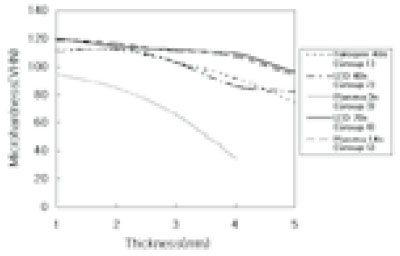References
1. Althoff O, Hartung M. Advances in light curing. Am J Dent 2000. 13(Special No)77D–81D.
2. Stahl F, Ashworth SH, Jandt KD, Mills RW. Light-emitting diode (LED) polymerization of dental composites: flexural properties and polymerization potential. Biomaterials 2000. 211379–1385.
3. Mills RW, Jandt KD, Ashworth SH. Dental composite depth of cure with halogen and blue light emitting diode technology. Br Dent J 1999. 186(8)388–391.
4. Rueggeberg FA, Twiggs SW, Caughman WF, Khajotia S. Lifetime intensity profiles of 11 light curing units. J Dent Res 1996. 75380.
5. Nakamura S, Mukai T, Senoh M. Candela-class high brightness InGaN/AlGaN double heterostructure blue-light-emmiting diodes. Appl Phys Lett 1994. 641687–1689.
6. Haitz RH, Craford MG, Wiessman RH. Devices, measureaments and properties. Handbook of optics 1995. Vol 2NewYork: McGraw-Hill; 1–39.
7. Fujibayashi K, Ishimaru K, Kohno A. A study on light activation units using blue light-emitting diode. J Jap Dent Pres Acad 1996. 39180–188.
8. Fujibayashi K, Ishimaru K, Takahashi N, Kohno A. Newly developed curing unit using blue light-emitting diode. Dent Jap 1998. 3449–53.
9. Peutzfeldt A, Sahafi A, Asmunssen E. Characterization of resin composites polymerized with plasma arc curing units . Dent Mater 2000. 16330–336.
10. Hofmann N, Hugo B, Schubert K, Klaiber B. Comparison between a plasma arc light source and conventional halogen curing units regarding flexural strength, modulus, and hardness of photoactivated resin composites. Clin Oral Investig 2000. 4140–147.
11. Munksgaard EC, Peutzfeldt A, Asmussen E. Elution of TEGDMA and BisGMA from a resin and a resin composite cured with halogen or plasma light. Eur J Oral Sci 2000. 108341–345.
12. Nomoto R. Effect of light wavelength on polymerization of light-cured resins. Dent Mater J 1997. 16(1)60–73.
13. Jandt KD, Mills RW, Blackwell GB, Ashworth SH. Depth of cure and compressive strength of dental composites cured with blue light emitting diodes (LEDs). Dent Mater 2000. 1641–47.
14. Mills RW, Uhl A, Blackwell GB, Jandt KD. High power light emitting diode (LED) arrays versus halogen light polymerization of oral biomaterials: Barcol Hardness, compressive strength and radiometric properties. Biomaterials 2002. 232955–2963.
15. St-Georges AJ, Swift EJ, Thompson JY, Heymann . Curing light intensity effects on wear resistance of two resin composite. Oper Dent 2002. 27410–417.
16. Sharkey S, Ray N, Burke F, Ziada H. Surface hardness of light-activated resin composites cured by two different visible-light sources: An in vitro study. Quintessence Int 2001. 32401–405.
17. Gagliani M, Fadini L, Ritzmann RM. Depth of cure efficacy of high-power curing devices vs traditional halogen lamps. J Adhes Dent 2002. 441–47.
18. Knezević A, Tarle Z, Meniga A, Sutalo J, Pichler G, Ristic M. Photopolymerization of composite resins with plasma light. J Oral Rehabil 2002. 29782–786.
19. Kelsey WP, Blankenau RJ, Powell GL, Barkmeier WW, Stromberg EF. Power and time requirements for use of the argon laser to polymerize composite resin. J Clin Laser Med Surg 1992. 10273–278.
20. Koliniotou-Kubia E, Jacobson PH. The effect of irradiation time on the physical properties of light-cured resins. Clin Mater 1990. 621–28.




